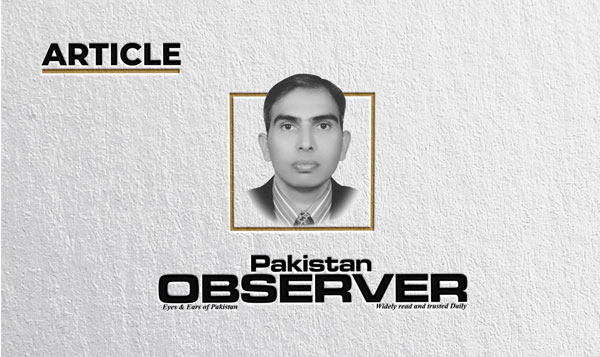Imran & TINA moment
IMRAN has announced dissolution of provincial government(s) to get (early) elections. Economic instability has deteriorated further.
History shows that economic reforms not elections will revive our economy. Pakistan is facing TINA moment which led to India’s economic reforms in 1991.
All political parties including PTI need to return to Parliament for Pakistan and cobble an economic policy (including pegging of rupee to gold, return of SBP under state control) and then call election.
Due to the foreign exchange crisis in late 80s and early 90s, India agreed to shift 67-ton of gold to BoE and Switzerland secretly for raising $405 to fund current account deficit.
But the secret was out after a tyre of the van with gold burst which started public protests. The Government however maintained its decision by saying that There Is No Alternate (TINA).
Pakistan can learn from West’s LPG, Gandhi’ vision and mix of latest economic measures including IT, pegging of currency to gold and its use in digital currency.
Some of the BRICS members are already trading with each other by keeping their currencies in their banks for imports.
It is helping them reduce size of dollar based foreign reserve, lower interest rates, cut inflation and cost of living.
India leased its gold (LIBOR, interest rate) in 1991 to foreign banks (BoE, BoJ, USB) for clearing its balance of payments.
PM Rao made Manmohan Singh Finance Minister in 1991. Manmohan adopted economics reforms of liberalization, privatization and globalization (LPG-1).
Thatcher introduced them in the UK in 1979 which failed and the country was on strike. Economic experts argue that if India had adopted LPG-1 in the 60s it would have overtaken China.
India is divided on Ghandhi’s economic model, West’s LPG model with corruption, war and democracy.
Mahatma Ghandi’s economic policy was based on villages as economic castles and non-violent rural industrialization (Charkha and Suit) to avoid exploitation and wars.
He was shot dead. After Mumbai Battle, Nehru divided Gujrat and Maharashtra while keeping Mumbai’s industry under the Centre.
In 1956, Marathis and Gujaratis fought over control of resources. The Bell Commission’s post partition 5-year economic plans ended with fall of Shastri government in 1966 due to low per acre agri-output, droughts and wars.
When Indira Ghandi became PM after Shastri, Indian rupee had sharply declined after Johnson stopped US aid to India in 1965 for supporting Vietnam after Kennedy’s assassination.
As a populist leader, she aborted economic plans of WB and others and ordered large-scale nationalization.
Bhutto also followed her footsteps. Both were killed. Kennedy tried to end war and he was shot dead. Trump tried to end war and he lost election with 75M votes.
Carter (Mao) and Rao (Liberal Reforms) were turned into accidental leaders. No accountability on Covid and war corruption in Western model.
Under LPG-2, Modi plans to turn India into a $5T economy. The critics have rejected high GDP figures as jobless growth as Startups, Standups and Make in India wobble.
Like Nehru, Modi has stolen one lac jobs and funds by shifting four projects from Maharashtra to Gujrat (Airbus Rs 22,000 crore, Semi-conductor chip manufacturing plant Rs1.54 lac crore, Medical Devices Park Rs424 crore and Bulk Drugs Park Rs3000 crore.
It is start of another Mumbai Battle. Similarly, Modi has stolen overseas Apple plant with its jobs. India has 55M unemployed people.
With working population of 1.1bn by 2040, country’s 69% jobs are under threat to automation (8 Aug 2022 the Economic Times India).
India’s manufacturing GDP share is just 19%. The rising unemployment shows Western model is only serving ruling elite at the cost of public.
Like Western allies, India will have to go to war for new markets with their model. Militarization of Bay of Bengal is one example.
By 2020, the income share of the bottom half of the Indian population was estimated to have fallen to only 13%, while the top 10% captured 57% of national income and the top 1% alone got 22%.
For India, the World Inequality Report estimates that the ratio of private wealth to national income increased from 290% in 1980 to 555% in 2020.
Women’s share of labour income is at 18%. The gap between rich and poor is deepening in India and the West.
To stay in power, Modi has dismantled India’s standing army with 4-year Agnipath US style tours of duty on pretext of saving economy by cutting pensions.
He has turned Indo-Pacific deal into guarantee to stay in power like monarchs of ME. By removing 7.5% donation cap and keeping donor identity secret, he has made BJP too powerful for democracy.
Party fund of Rs 4,847 crore is 3.7% of GDP, which is more than 2.4% annual military budget of India. Election Commission and judiciary are already marginalized.
To stay in power, BJP will keep destroying democracy and minorities (4th Pol Party, Carnegie).
PTI also tried to stay in power indefinitely by unconstitutionally replacing parliamentary system with one party system and taking over military through one-page policy.
Our political parties should see if Gandhi’s vision of village economy, jobs and rural industrialization is more economical, self-reliant, requires minimum infrastructure development, green, crime free, low living cost and secures food, energy and water needs.
More domestic production, less imports and almost 100 percent employment at family level.
Independent foreign policy, low defence spending, regular national army and long-term peace. Role of IT, gold, and digital currency in economy, jobs and transparency.
—The writer is senior political analyst based in Islamabad.










